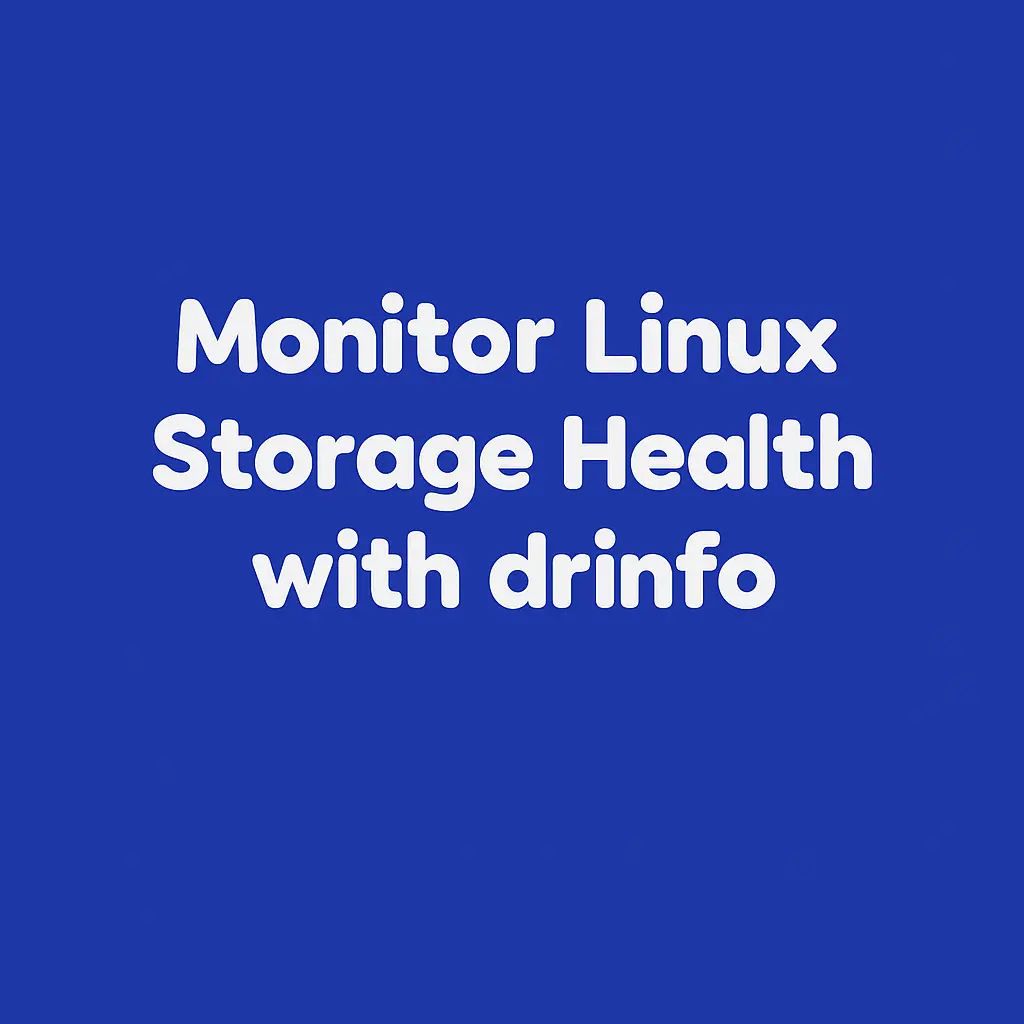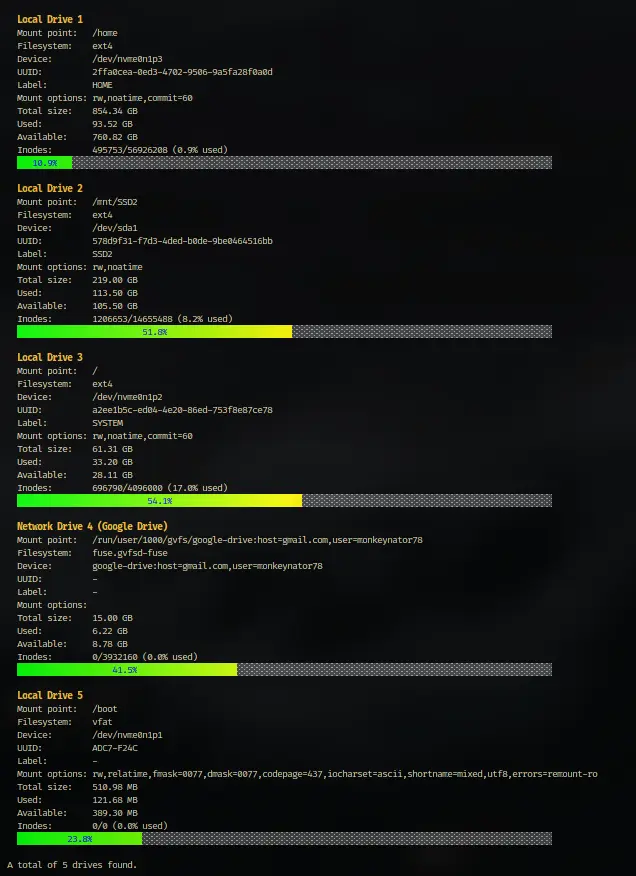Monitor Linux Storage Health with drinfo: A Lightweight df Upgrade

Keeping capacity under control is easier when you can scan the filesystem at a glance. drinfo delivers that visibility by blending df, lsblk, and SMART hints into one C-based CLI that fits neatly in your toolbox.
What is drinfo?
drinfo is an open-source drive inspector from Lennart Martens. The tool walks every mounted filesystem—local, network, or cloud—and prints usage statistics with gradient progress bars. Its goal is to surface the information SREs reach for most: device path, mount point, filesystem type, available space, inode consumption, and SMART health (when run as root).
Key Features
- Physical and network drive awareness: drinfo enumerates block devices alongside NFS, SMB, and other remote mounts so nothing slips past dashboards.
- Readable visuals: adaptive color gradients move from green to yellow to red as usage climbs, and the layout automatically fits your terminal width.
- Human-friendly units: sizes are rendered in B/KB/MB/GB/TB, so you spend less time squinting at raw sector counts.
- Deep metadata: per volume you see UUIDs, labels, filesystem options, and inode stats—ideal when comparing staging vs. production mounts.
Installation
Clone the repository and build the binary with the bundled Makefile:
git clone https://github.com/Lennart1978/drinfo.git
cd drinfo
make
To install the executable and its man page system-wide (requires sudo):
sudo make install
Need to roll back? Run sudo make uninstall to remove both artifacts.
Usage Basics
After installation, invoke the CLI with no arguments to render the dashboard:
drinfo
Run drinfo --help for a quick synopsis, or drinfo --version to confirm the release you compiled. Execute the tool as root when you want SMART diagnostics included in the table.

Operational Tips
- Capacity checks: drop drinfo into cron or a health-check wrapper to snapshot free space before maintenance windows.
- Remote sessions: the responsive layout means SSH admins get a clean view regardless of terminal width.
- Combine with alerts: capture drinfo output in CI or automation and trigger alerts when progress bars cross critical thresholds.
- Document mounts: the UUID and mount option columns double as living documentation for your fleet.
Conclusion
drinfo modernizes traditional disk inspection without adding a bulky dependency tree. Build it once, keep it on your jump box, and enjoy an at-a-glance status report every time you log in.
For efficient incident management and to prevent on-call burnout, consider using Akmatori. Akmatori automates incident response, reduces downtime, and simplifies troubleshooting.
Additionally, for reliable virtual machines and bare metal servers worldwide, check out Gcore.
